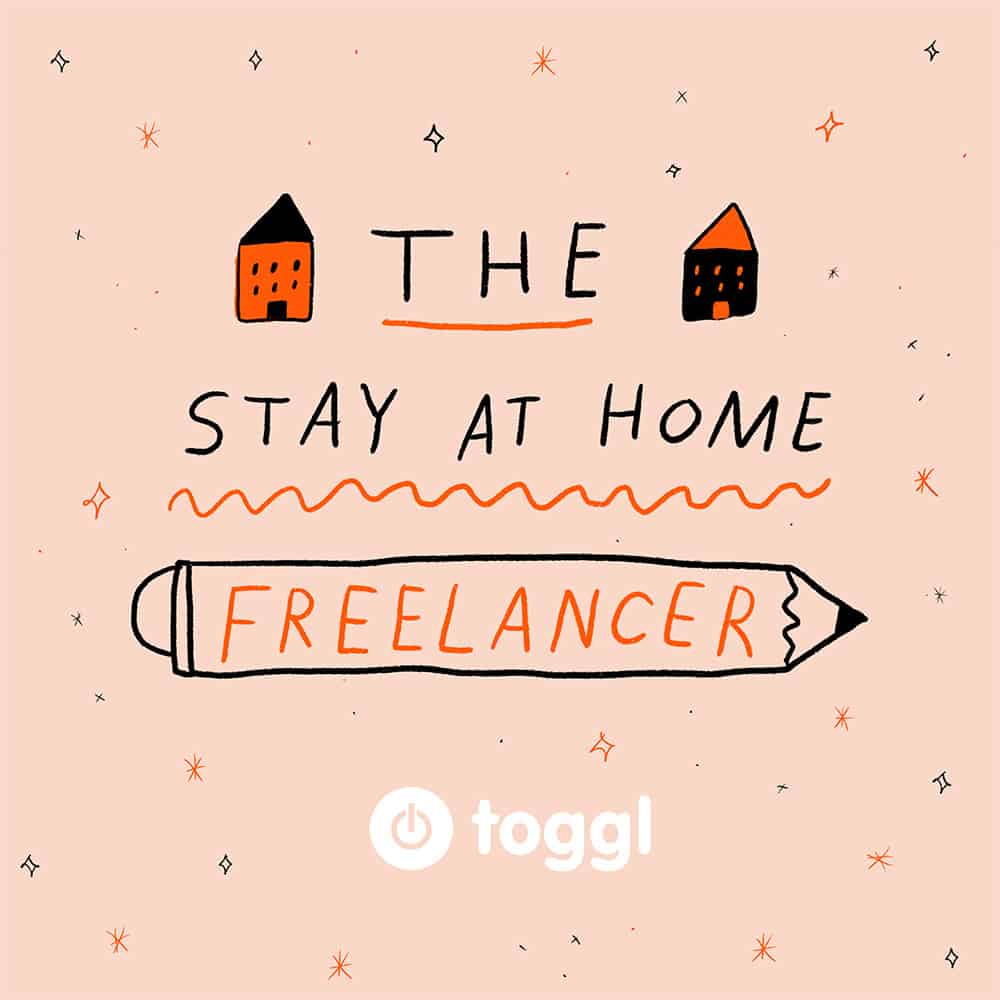

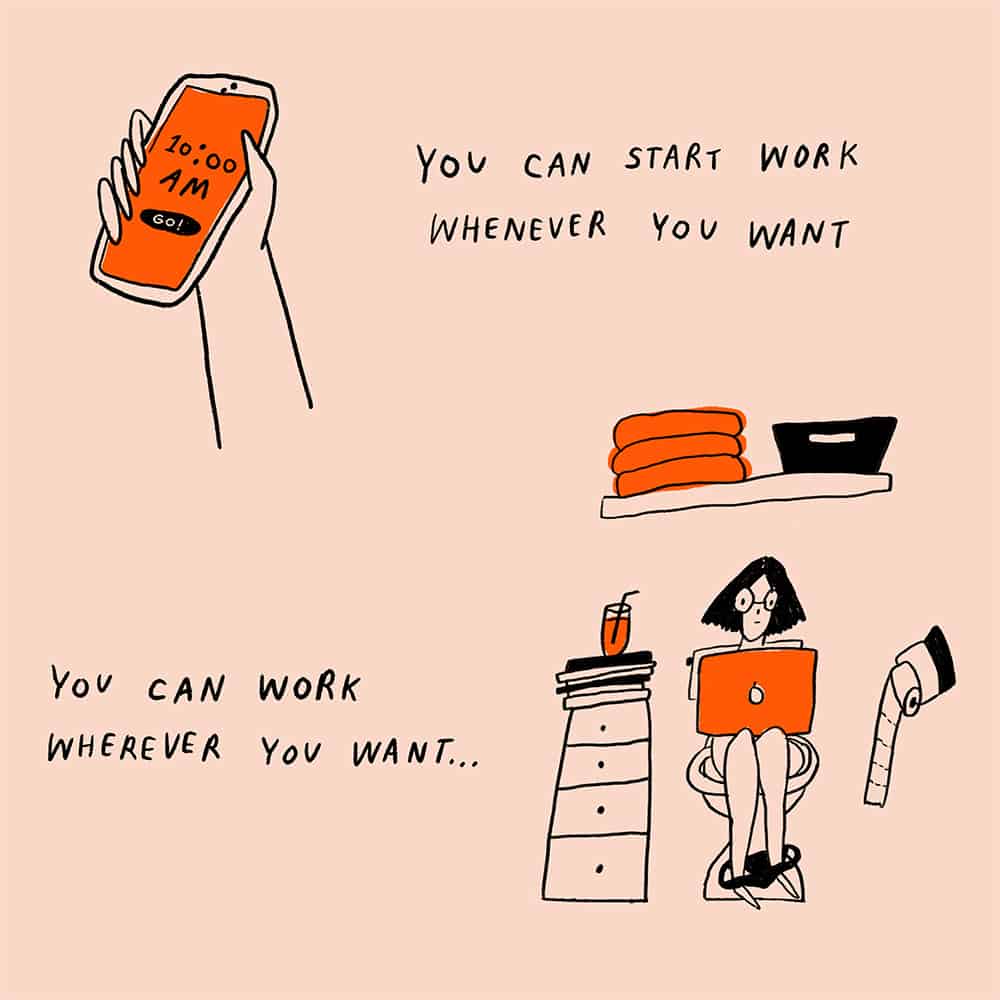
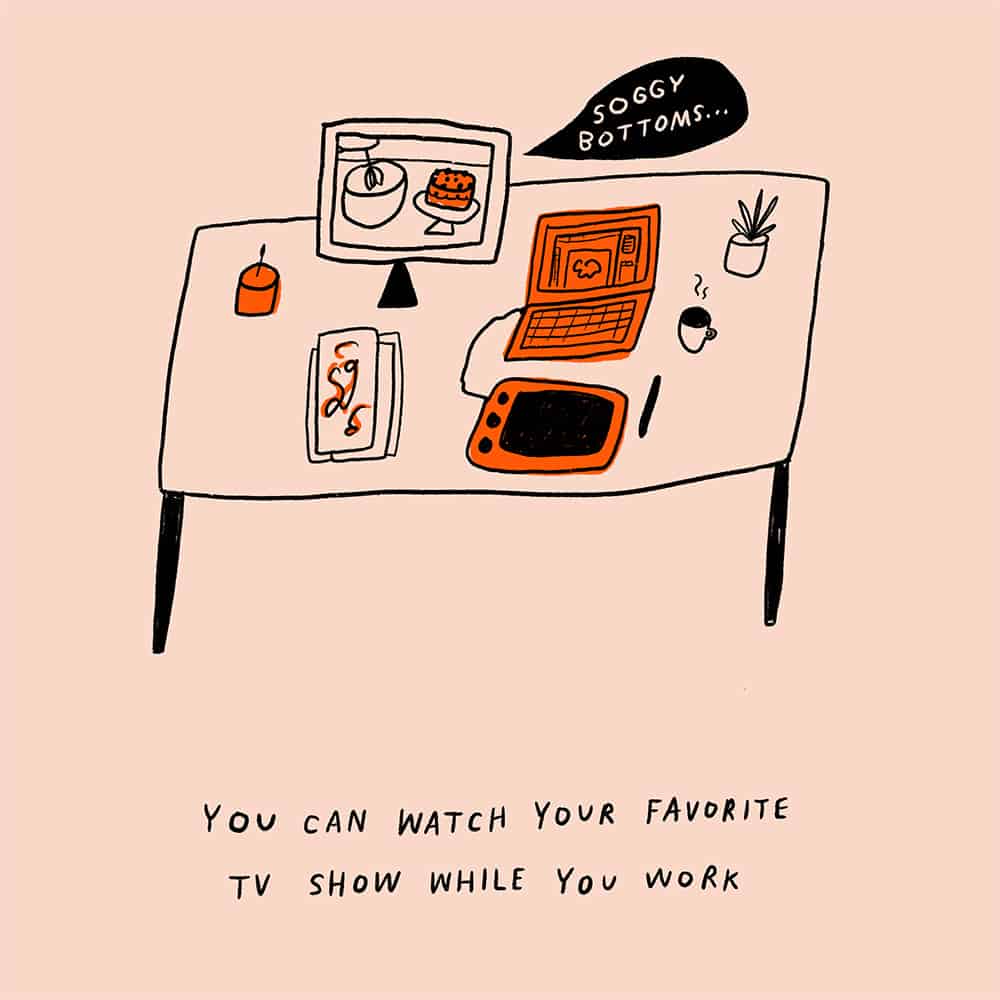


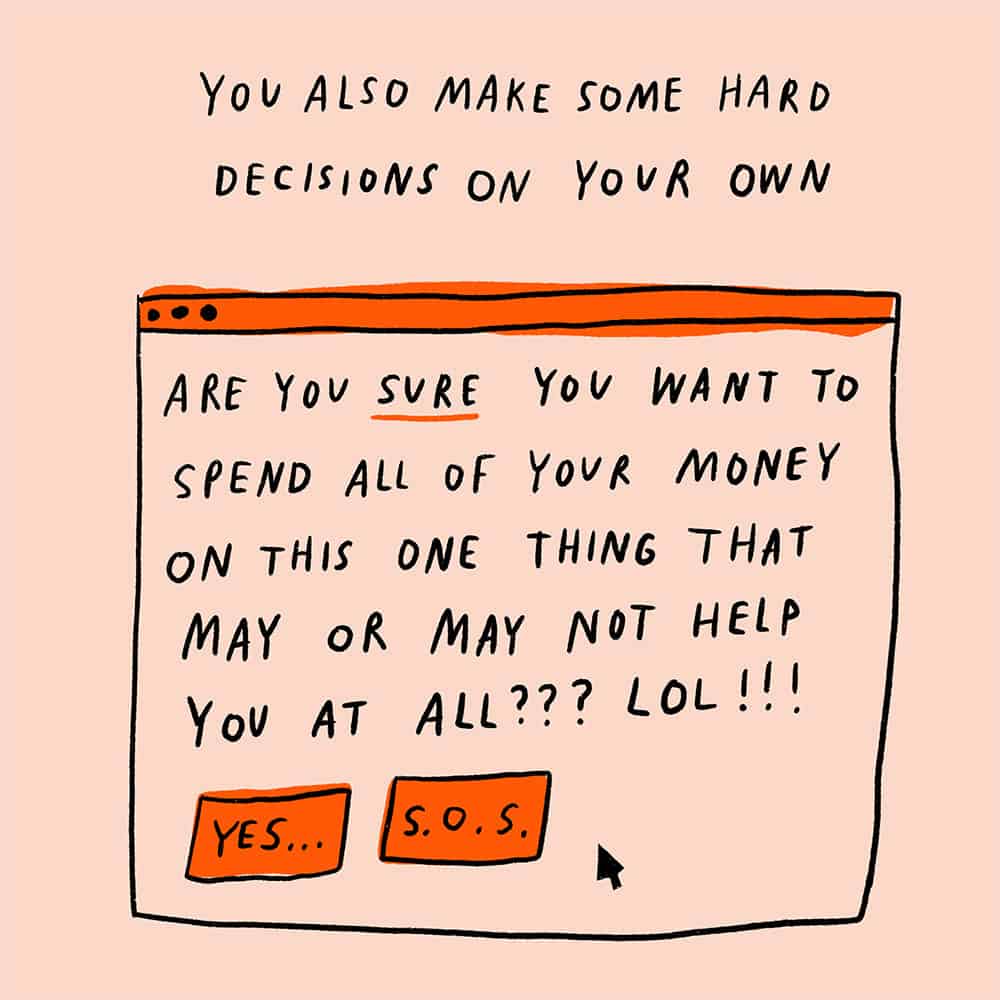
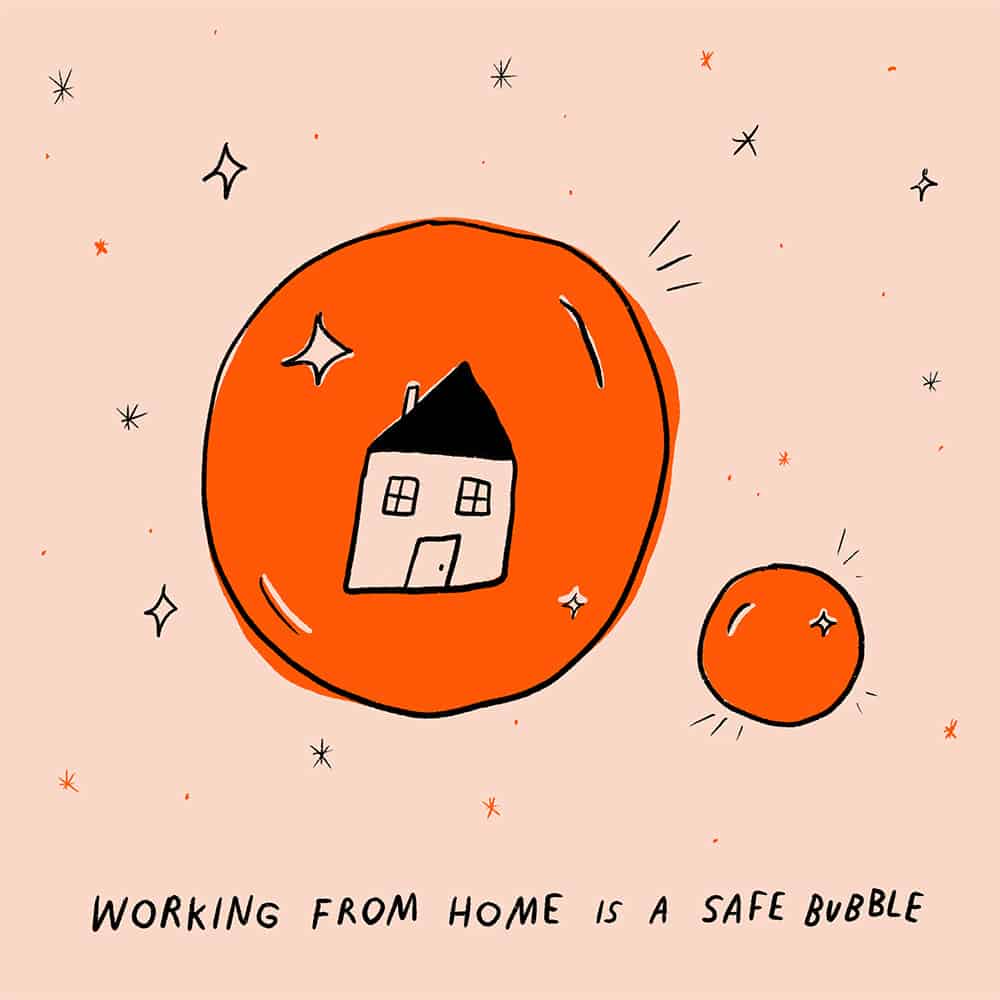
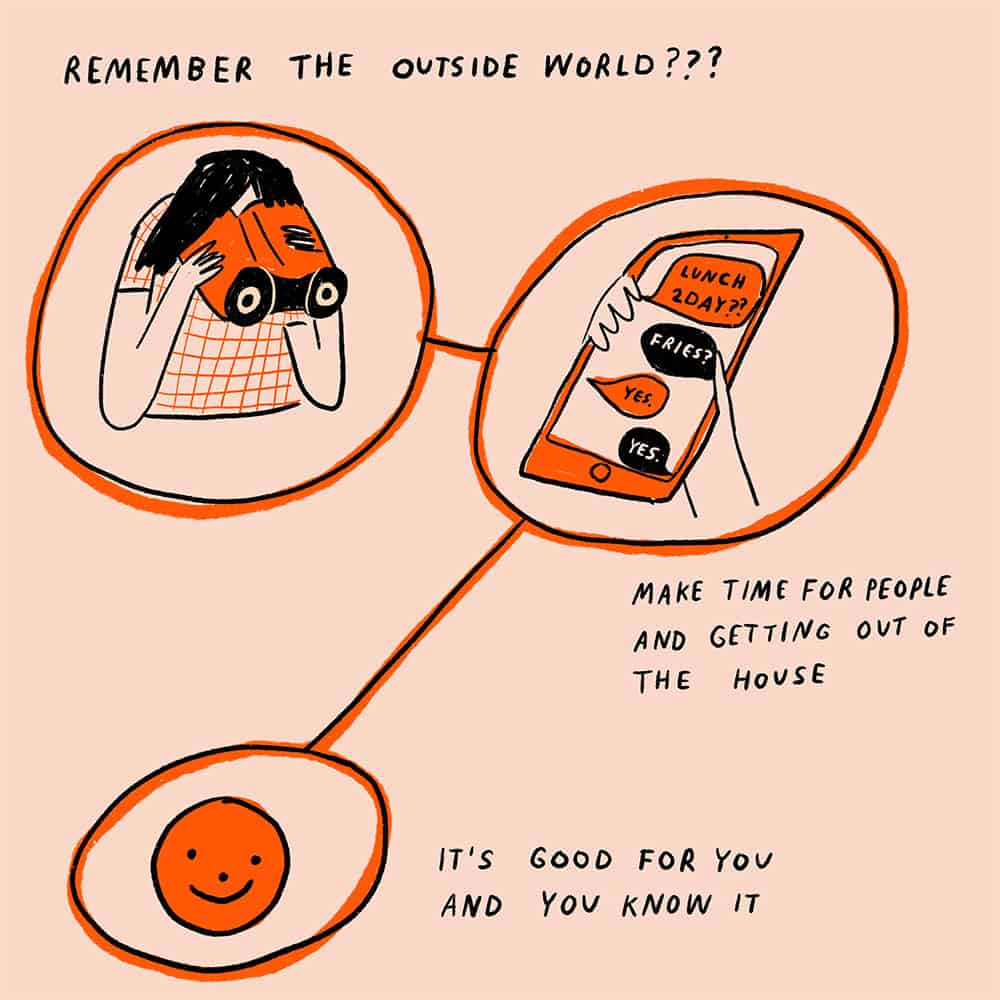

The Work From Home Freelancer was created by Kristen Barnhart who spends her days drawing and screenprinting at her home in Denton, Texas.
The way we work from home is pretty new, but the house as a workplace is not. Telecommuting was first proposed in 1973 by former NASA engineer Jack Nilles, who thought of it primarily as an alternative to transportation. When he penned his case-study The Telecommunications-Transportation Tradeoff, American cities were booming. The 1950s and 60s had popularized the car. The 70s made it ubiquitous. However, the 1974 OPEC crisis led to increasing gas prices. Reliance on cars started to concern some people. In the present day, avoiding commutes is still cited as a reason people work from home. Cities are getting more expensive. People are moving further away from their jobs in search of more affordable housing. Increased traffic congestion stretches short distances into long commutes. But the way we work has also changed. Freelance and contract work is on the rise, and the internet has made it easier than ever to work from where ever there’s access. But, as always, there is a trade-off.
The issues of working from home
I think a lot about working from home. All of us at Toggl do; we’re a fully remote company. A number of us were freelancers before Toggl. For most, working from home is not an entirely new concept. Working from home is fantastic, many of which I’m sure you could guess, even if you don’t work from home. But there are some not so great things we don’t usually talk about. Every 6 months, we do a workplace-wide survey to check up and see how people feel about the company and their work. On every survey, at least some people report feeling lonely or isolated.
Every 6 months, we do a workplace-wide survey to check up and see how people feel about the company and their work. On every survey, at least some people report feeling lonely or isolated.
It makes sense. As distracting as offices can be, the distraction can sometimes be good for your mental health. Spending face-to-face time with other people is good for you. Offices automatically enforce face-to-face time.
Healthy freelancer lifestyle
As a freelancer or remote worker, you are wholly reliant on yourself to schedule most your human interaction. If you’re also responsible for bringing in jobs, planning your work day and motivating yourself to get the work done. Any additional responsibilities can be draining. On the freelance scale of priorities, earning money and its associated activities is number 1. Having a healthy lifestyle often falls near the bottom. One’s ability to spend time with other people and pursue a healthy lifestyle is dependent on many factors. Listing them would be beyond the scope of this post. But their benefits are universal. Taking small steps towards caring for your mental well being is all we can ask. Our suggestion is to start working these little things into a routine. We are big believers in routine. If you search ‘how to be a better freelancer’ or ‘how to get work done from home,’ I will almost guarantee that every list or article mentions routine. Taking care of yourself needs to be a part of yours. Like I said, start small! Make a list of things you can do for yourself which could help improve your mental health. Maybe your lack of social interaction is hurting your mood. Perhaps you’re just spending too much time at your house. Once you identify a bigger issue, you can break it down into smaller bits, then add those bits to a checklist. For example, if you’re struggling with a lack of social interaction, maybe the first goal could be finding a group of freelancers you can work with or even just talk to. The research of discovering a group can be your small, achievable first step. Set aside a chunk of your day to knocking that off your checklist. Set a timer! You can then repeat this method of breaking down the big tasks into smaller bits until you’ve found the social support that’s right for you. No matter your problem, breaking down your goals into small achievable tasks is a great way to make daunting goals doable. Plus if you continue doing this every day, you’ll form a habit. So what are you waiting for? It’s time to take care of yourself.
Emma Murray makes content and content and even more content. She believes everyone has a few good words in them. She also does photojournalism here: https://www.emmakathleenmurray.com/


![The Hidden Dangers of Refactoring [Comic]](images/mart-hidden-dangers-refactoring-toggl-comic-blog-cover-498x404.jpg)